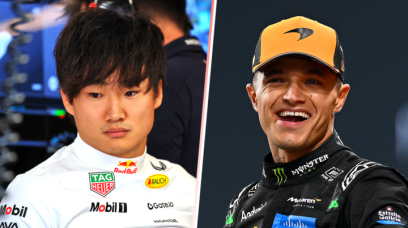Red Bull advisor Dr Helmut Marko has explained the "huge" extent of the damage Sergio Perez sustained during the Mexico City Grand Prix.
On lap 18 of 71, the 34-year-old was locked in a fierce on-track battle with the driver touted as a replacement for him at the Milton Keynes team next season, Liam Lawson.
Attempting to overtake the RB heading into Turn 4, Perez put his Red Bull up the inside of the New Zealander, who held firm, ultimately pushing his rival wide through the following corner.
The two cars made contact, with the Mexican suffering considerable damage to the sidepod of his RB20, as he conceded the position.
It was downhill from there for Perez, who had already incurred a five-second time penalty for a false start from P18 on the grid.
Already towards the back of the field, a late pit stop - in a failed bid to wrestle the fastest lap point away from a constructors' championship rival - consigned him to P17 and the last of the remaining runners to cross the chequered flag.
Despite the increasingly intense pressure on Perez to perform, Marko argued that judging the 34-year-old's performance was pointless, given the size of the damage inflicted upon his RB20.
"We were of course dealing with that unnecessary collision with [Liam] Lawson, nota bene [take note] from our sister team. The damage to the underside of Perez's car was huge," the Austrian told Sky Sports Germany.
"What we could deduce is that we lost 60 points of downforce. Everything we saw from Perez after that is irrelevant because the car was no longer at the level it needed to be."
Viewed by others:
Points of downforce explained
Aerodynamics, and specifically points of downforce, can be difficult to correlate - and articulate - into lap time lost.
However, it is often suggested that 10 points of downforces corresponds with roughly a tenth of a second in performance.
RacingNews365 spoke to former Alpine engineer Ramon Drost, who explained why that is not necessarily the case, whilst providing context to the Perez figure.
"Aero points are points where the car's computer model is compared to practice to get an indication of what the loss could be with a certain damage to the car, he stated. "Teams themselves also don't know exactly how certain damage translates into time loss.
"Often, however, it is the case that the car can still be driven with a loss of 20 points, but where tyre management becomes more difficult, while 50 to 60 points makes it very difficult to drive at a stable pace. The performance then has a big drop off and you're basically hopeless."
Don't miss out on any of the Formula 1 action thanks to this handy 2026 F1 calendar that can be easily loaded into your smartphone or PC.
Download the calenderMost read
In this article












Join the conversation!